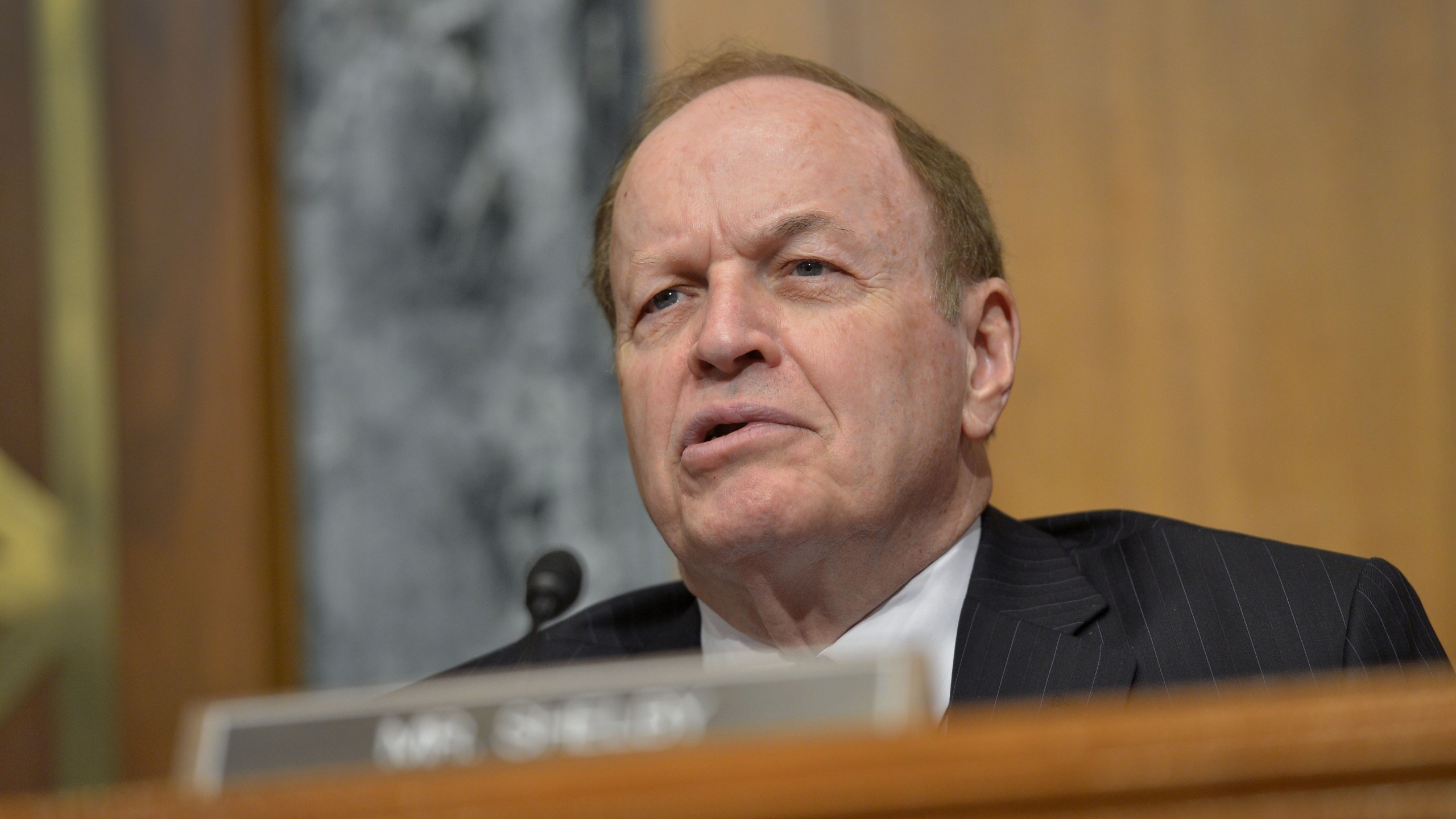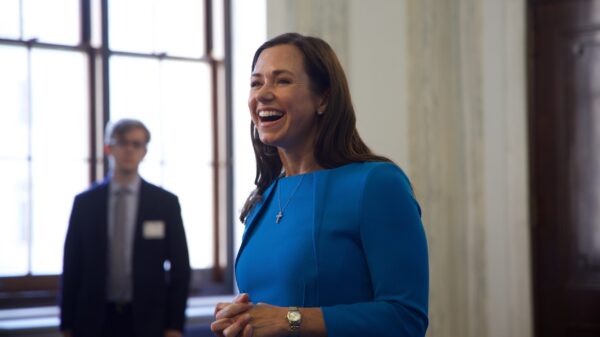Senator Richard Shelby, R-Alabama, vice chairman of the Senate Appropriations Committee and its subcommittee on defense, today voted 68-29 to pass a comprehensive appropriations package containing all 12 Fiscal Year 2023 (FY23) spending bills.
In addition to the annual funding bills, the legislation includes $47 billion in emergency funding to support Ukraine’s valiant efforts to repulse Russian invaders and bring the conflict to an end, as well as $38 billion in much-needed emergency disaster assistance.
“Throughout my career, I have done everything in my power to bring success to my home state. The funding for Alabama in this package is significant in terms of the impact it will have on communities and the overall state-wide economy for generations to come. This package also represents a serious commitment to our national defense, aid for Americans in need as a result of natural disasters, and continuing support for the people of Ukraine as they fight against Russian aggression. While the path to get here was winding at times, I am proud that we have completed our work for the American people.
“I have been blessed to represent the great state of Alabama for 36 years in the Senate, and it is my hope that I have left the state better than I found it. I look forward to witnessing the results of this funding and the state’s continued growth as a private citizen in just a few short weeks. Thank you, Alabama. Serving you has been the honor of my lifetime,” said Senator Shelby, following 36 years in the U.S. Senate and eight years in the U.S. House of Representatives.
The FY23 omnibus package provides a 10 percent increase in defense appropriations, fully funding the level set by the FY23 National Defense Authorization Act, as well as an increase of only 5.5 percent in non-defense funding, which reduces the Biden Administration’s wasteful non-defense budget request increase by more than half. Following passage in the Senate, the House of Representatives is expected to vote on the package this week prior to the government funding deadline of December 23.
The package contains the following funding provisions impacting Alabama:
Impacting Montgomery and the Wiregrass Region:
· $13 million for the Abbeville Municipal Airport for the design and construct of additional runway length.
· $1.4 billion for flight training at Fort Rucker.
· $360 million for Future Vertical Lift research, which will accelerate the development of helicopters flown at Fort Rucker, and an additional $23 million to accelerate the Future Long Range Assault Aircraft.
· $166.5 million for United States Coast Guard MH-60T sustainment.
· $136 million to upgrade the MH-60 series helicopters.
· $165 million for 15 additional Terminal High Altitude Area Defense (THAAD) interceptors.
· $216 million for Joint Air-to-Ground Missiles (JAGMs).
· $785 million for Joint Air-Surface Standoff Missile (JASSMs) and $161 million for Long Range Anti-Ship Missiles (LRASMs).
· $115 million for Hellfire missiles, which are made in Troy.
· $170 million for Javelin missiles.
· $15 million military construction project building a Commercial Vehicle Inspection Gate at Maxwell Air Force Base.
· $9 million military construction project building a F-35 Weapons Load Crew Training facility at the Montgomery Region Airport.
Impacting North Alabama:
· Army Research – $17 billion for continued investment in transformational technologies to address modern and future Army warfighting needs.
· Hypersonic weapons – fully funds Army hypersonic research, as well as an additional $60 million to develop a common hypersonic glide body and $50 million towards high energy laser development.
· $2.6 billion for Space Launch System, of which $600 million is for concurrent Block 1B development, which is managed by Marshall Space Flight Center in Huntsville.
· $110 million for nuclear thermal propulsion, which benefits Marshall Space Flight Center.
· $652 million for FBI construction at Redstone Arsenal, which supports ongoing and growing efforts in Huntsville.
· $44 million military construction project building a Physics Lab at Redstone Arsenal.
· $52 million military construction project building Consolidated Warehouses.
· $6 million military construction project updating Building 6231 at Redstone Arsenal.
· $151 million military construction project for DIA/MSIC’s Advanced Analysis Facility Phase 2.
· $11 million military construction project for Backup Power Generation.
· $30 million in funding for Alabama’s Northern Beltline of the Appalachian Development Highway System.
· $500,000 for the Invasive Species Mitigation Plan to begin the planning, design, initial engineering and project management for construction of carp barriers in the Mississippi River Basin, including the Tennessee River, and the Tennessee-Tombigbee waterway.
· $27 million for the Fish and Wildlife Service to combat Asian Carp and enhance efforts in sub-basins of the Mississippi River, which includes key areas of Alabama in the Tennessee and Cumberland basins.
· No less than $10.5 million, $3.5 million above FY22 enacted level, for the NOAA VORTEX-SE program, which is located at the University of Alabama in Huntsville.
Impacting Tuscaloosa:
· $50 million for the University of Alabama for a permanent endowment fund to support the recruitment and retention of exceptional faculty in science and engineering.
· $45 million to the University of Alabama to construct the Center for Hydrologic Computing, which will support CIROH and its co-located partners, the NWC and the USGS Hydrologic Instrumentation Facility (HIF), in hydrologic research, education, and forecasting.
· $10 million for The University of Alabama for an institute on public service and leadership, including a scholars program.
· $100 million for the Alabama Department of Transportation to replace the existing Woolsey Finnell Bridge with a six-lane bridge in Tuscaloosa, Alabama.
· $26 million for the Tuscaloosa National Airport for the design and construction of additional runway length.
· $45 million in grant funding for the nation’s protection and advocacy (P&A) system, which includes the Alabama Disabilities Advocacy Program (ADAP) in Tuscaloosa.
· $40 million in formula State grants for Protection and Advocacy for Individuals with Mental Illness (PAIMI), which supports the ADAP PAIMI program in Tuscaloosa.
· Provides funding to the U.S. Geological Survey to support the new USGS Hydrological Instrumentation facility, which is located at the University of Alabama:
o $13.5 million to support integrated water prediction operations;
o $4 million to assist in future hydrological research and operational efforts;
o $4.5 million for university partnerships for innovative water resource sensor technologies.
· $5 million for the Bureau of Ocean Energy Management to establish a Center for Paleo-environmental Records of Extreme Events, which will be located the University of Alabama.
· No less than $38.5 million to support staffing and operations at the National Water Center (NWC), which is located in Tuscaloosa, Alabama.
· $28.25 million, $8.25 million above the FY22 enacted level, for the National Oceanic and Atmospheric Administration’s (NOAA) Cooperative Institute for Research to Operations in Hydrology (CIROH), which is located at the University of Alabama, to assist NOAA and the National Water Center in addressing the nation’s growing water-related challenges and leveraging CIROH expertise for most operationally relevant research.
o $1 million is maintained for the National Centers for Costal Ocean Service to collaborate on research priorities with the NOAA CIROH.
Impacting the Birmingham Area:
· $76 million for the University of Alabama Birmingham (UAB) Heersink School of Medicine to build a new biomedical research building.
· $55 million for the Secret Service’s National Computer Forensics Institute (NCFI), located in Hoover, to expand training opportunities for state and local law enforcement and legal and judicial professionals in computer forensics and cyber investigations.
· $5 million for the Secret Service’s Cyber Fraud Task Forces to increase mission effectiveness and provide modern investigative capabilities to combat transnational crimes.
· $23 million to repurpose and renovate NCFI facilities to accommodate for the ongoing growth of the program.
· $30 million in funding for Alabama’s Northern Beltline of the Appalachian Development Highway System.
· $47.5 billion for the National Institutes of Health (NIH), an increase of nearly $2.5 billion above FY22 funding level.
· $7.32 billion for the National Cancer Institute (NCI), an increase of $407.6 million from FY22.
· $923 million for the National Center for Advancing Translational Sciences (NCATS).
· $629 million for Clinical and Translational Science Awards (CTSAs), which continues funding for a CTSA award at UAB.
· $25 million in grant funding for the Regional Pediatric Pandemic Network, a network of ten Children’s hospitals, including Children’s of Alabama.
· $52 million in targeted funds for Regional Biocontainment Laboratories (RBLs) to test FDA-approved drugs at research institutions across the country, including UAB.
· $280.295 million of the NIH, Helping to End Addiction Long-term (HEAL) Initiative, to address addiction and develop alternatives to opioids for safe and effective pain management.
· $520.163 million for the National Institute of Dental and Craniofacial Research and continued support of the National Dental Practice-Based Research Network, founded and hosted at UAB.
· $47 million for Area Health Education Centers (AHECs), which supports the Alabama Statewide AHEC Program that is hosted within the UAB Department of Family and Community Medicine.
· $119 million for the National Institute on Disability, Independent Living, and Rehabilitation Research (NIDILRR), which supports the Rehabilitation Engineering Research Center on Recreational Technologies (RERC Rec-Tech) in Birmingham.
· $8 million in Emerging Infectious Diseases for the Centers for Disease Control and Prevention (CDC) to utilize its clinical trial partners and the Mycoses Study Group, which is affiliated with UAB.
· Funding consistent with cooperative agreement to support the Department of Energy’s National Carbon Capture Center in Wilsonville, Alabama.
· $4.5 million, $1.5 million above the FY22 enacted level, for the NIST Cybersecurity of Genomic Data program, which supports ongoing research in cybersecurity for genomic and biomedical-based systems at the University of Alabama at Birmingham.
Impacting Anniston:
· $171 million for Hydra rockets, which are built in Anniston and fired from Army and Marine Corps helicopters.
· Funding for Army vehicles overhauled and maintained at Anniston Army Depot (ANAD), including:
o $1.25 billion to continue upgrading and modernizing the M1 Abrams tanks;
o $891 million for Stryker vehicle upgrades;
o $680 million for Paladin Integrated Management artillery vehicles; and
· $71 million for Federal Emergency Management Agency’s (FEMA) Center for Domestic Preparedness.
Impacting Auburn:
· $15 million to continue the three recently established Institutes for Rural Partnerships, including Auburn University.
· Provides funding to the Agricultural Research Service, which supports current research initiatives at Auburn University:
o Additional $3 million for research on improvements in broiler production;
o Additional $1.5 million for improving health and productivity of agricultural fields at the National Soil Dynamics Laboratory;
o Additional $2 million for further research on harmful algal blooms to support aquaculture production;
o Additional $2.5 million for sustainable food safety strategies for poultry;
o $3 million for the Animal Health and Agro Bio-Defense Program;
o $3 million for sustainable and advanced technologies for poultry processing;
o $6 million to address cotton blue disease;
o $4 million for aquaponics system development;
o $2 million for biomass conversion technologies at the National Soil Dynamics Laboratory.
· Provides funding to the Army Corps of Engineers’ Engineer Research and Development Center for research initiatives, which will be supported by Auburn University:
o $10 million to support research and development of natural infrastructure solutions for bays and estuaries;
o $6 million, an increase of $4 million above FY22 enacted levels, for effects of navigation locks on threatened and endangered species.
· $8 million, $3 million above the FY22 enacted level, to support disease diagnostics efforts at Fish and Wildlife Service’s Warm Springs Fish Health Center, which collaborates with Auburn University’s Southeast Cooperative Fish Parasite & Disease Laboratory.
· $5 million to the U.S. Forest Service for research on forest carbon sequestration and pine needle blight, which supports work conducted at Auburn University.
· $8 million for the Department of Homeland Security’s Explosive Detection Canine Program, which was developed in collaboration with Auburn University.
Impacting the Mobile Area:
· $50 million for the City of Mobile to provide a revolving loan fund for commercial development and redevelopment of the downtown Mobile area.
· $35 million for Spring Hill College for a nursing and health sciences facility.
· $645 million for two additional Expeditionary Medical Ships (EMS). The EMS or “hospital ship,” includes an intensive care unit and other healthcare accommodations, while maintaining most of the original mission requirements.
· $200 million for the Alabama State Port Authority to provide rail infrastructure improvements, construct an inland container intermodal transfer facility, and expand the Port of Mobile’s existing container terminal.
· $9 million in grant funding for Assertive Community Treatment (ACT) for individuals with serious mental illness.
· $56 million, $6 million above the FY22 enacted level, for the operations and maintenance of Donor and Energy Transfer Ports, which benefits the Port of Mobile.
· Provides funding to the Army Corps of Engineers’ Engineer Research and Development Center for research initiatives, which will be supported by multi-universities, including the University of South Alabama, and the National Water Center in Tuscaloosa:
o $13.5 million for the Coastal Inlet Research Program, of which $8 million will be used for engineering frameworks to address coastal resilience needs and additional funding is provided to the NWC on protecting the nation’s water resources.
· No less than $5 million for the State Management of Recreational Red Snapper to ensure successful implementation of NOAA’s “Reef Fish Amendment 50” and language for NMFS to delay implementation of recalibration between sectors until the Gulf of Mexico Fishery Management Council can appropriately use this new abundance and more targeted catch data when making management decisions regarding red snapper.
· Language for NOAA to provide grants to academic partners for Gulf of Mexico Fisheries research, which will support future marine fisheries research at the University of South Alabama.
· No less than $3 million to support implementation of electronic logbooks for federally permitted Gulf Coast charter-fishermen.
· Provides no less than FY22 levels for staffing and operations at the NOAA Gulf of Mexico Disaster Response Center, which is located in Mobile.
· $77 million for the Coast Guard’s Waterways Commerce Cutter program.
State-wide Impact:
· Supports the President’s budget request of $133.6 million for Army Corps of Engineers’ dredging projects throughout the State of Alabama.
o Additional $26.4 million above the President’s budget request to support further Army Corps’ dredging operations along multiple waterways and bays in Alabama.
· $35 million for the construction of a new math and science facility at Marion Military Institute.
· $50 million for the Department of Labor (DOL) Workforce Opportunities for Rural Communities (WORC) program, to provide enhanced worker training in the Appalachian, Delta, and Northern Border regions.
· $385 million for the Children’s Hospitals Graduate Medical Education (CHGME), which will increase Pediatric residencies at Children’s & Women’s Hospital in Mobile and Children’s of Alabama in Birmingham.
· $3.98 billion for the National Heart, Lung, and Blood Institute (NHLBI) to continue addressing Cardiovascular Disease (CVD) and prioritized funding that reduces CVD among the hardest-hit—African Americans living in the rural South.
· $24.343 million for Nursing Workforce Diversity to increase nursing education opportunities for individuals from disadvantaged backgrounds by providing student stipends, scholarships, and preparation and retention activities.
· $40 million for the National Center for Emerging and Zoonotic Infectious Diseases’ Advanced Molecular Detection (AMD) program, which brings cutting edge technology to the front lines of public health by harnessing the power of next-generation sequencing and high performance computing with bioinformatics and epidemiology expertise to study pathogens.
· $362.8 million for the National Institute of Occupational Safety and Health (NIOSH) to conduct research and make recommendations for the prevention of work-related illness and injury. Including:
o $32 million for Education and Research Centers and;
o $29 million for the Agriculture, Forestry and Fishing Program.
· $196.5 million for the National Institute of Nursing Research (NINR) to support research related to identifying and reducing health disparities.
· $9.5 million for the National Technical Institute for the Deaf (NTID) to continue the NTID’s current Regional STEM Center (NRSC).
· $6 million for the Center for Assistive Technology Training (CATT) regional partnership, a collaboration between the American Printing House for the Blind (APH) and the Alabama Institute for Deaf and Blind (AIDB).
· $8.5 million for Gallaudet University’s regional partnership through the Early Language Acquisition Project (ELAP), headquartered at the AIDB in Talladega.
· $715.5 million for Adult Career, Technical, and Education (CTE) State grants.
· $80 million in grant funding for biomedical research facilities to expand, remodel, renovate, or alter existing research facilities or construct new research facilities.
· $205.6 million for the National Center on Birth Defects, Developmental Disability and Health (NCBDDD), including $2.5 million for partnership between national disability organizations, such as the National Center on Health, Physical Activity and Disability (NCHPAD) located in Birmingham.
· $25 million for Graduate Psychology Education (GPE) to increase the number of health-service psychologists to high-need, underserved populations in urban and rural communities.
· $90 million for the Supporting Effective Educator Development (SEED) program, which supports evidence-based professional development for teachers, principals, and other school leaders, teacher and leader preparation and other activities.
· $373.5 million for the Agency for Healthcare Research and Quality (AHRQ) to enhance the quality, appropriateness, and effectiveness of health services, as well as access to such services.
· $20.15 million for the Protection and Advocacy of Individual Rights (PAIR) program, which provides grants to agencies to protect and advocate for the legal and human rights of persons with disabilities who are ineligible for the protection and advocacy services available through the Development Disabilities and Bill of Rights Act.
· $13.118 million for the Traumatic Brain Injury (TBI) Program, which supports the Alabama Department of Rehabilitation Services in Montgomery.
· $81 million for State Councils on Developmental Disabilities, which supports the Alabama State Council for Developmental Disabilities in Montgomery.
· $1.43 billion for the National Center for Chronic Disease and Health Promotion, including $58.42 million for Nutrition, Physical Activity, and Obesity.
· $2 million for the National Lupus Outreach and Clinical Trial Education Program.
· Provides funding to the Rural Utilities Service and Farm Service Agency for water-related technical assistance programs, which positively impact rural communities in Alabama:
o $75 million for the Watershed Flood and Prevention Program, including a set-aside and language to exempt watershed projects that impact areas greater than 250,000 acres, which helps expand irrigation agriculture projects in Alabama;
o $21.18 million for the Circuit Rider Program.
· $3 million to continue the Animal and Plant Health Inspection Service pilot program to assist statewide departments of agriculture and forestry commissions, including the Alabama Forestry Commission, in controlling the spread of cogongrass.
· $400,000 for the Army Corps of Engineers to continue a feasibility study on riverine fish passages at Claiborne and Millers Ferry Locks and Dams on the lower Alabama River.
· $30.1 million for the Delta Regional Authority, including $15 million for flood control, basic public infrastructure development, and transportation improvements.
o $200 million for the Appalachian Regional Commission, including $65 million for the POWER initiative that provides federal funding to help communities and regions affected by job losses in coal mining and coal power plant operations, $16.5 million for industrial site and workforce development in Southern and South Central Alabama, and $8 million for Local Development Districts.
· $135 million for the Abandoned Mine Land Economic Revitalization program and language to expedite and streamline the OSMRE review process of AMLER projects, which supports the Alabama Department of Labor in funding projects in Alabama.
· $4.4 million for State Aquatic Nuisance Species Management Plans, which will support the Alabama Department of Conservation and Natural Resources’ efforts to prevent and control the spread of aquatic nuisance species throughout the State of Alabama.
· Provided funding for the National Park Service and the Fish and Wildlife Service’s Legacy Restoration Fund projects in Alabama:
o $7.451 million for the Freedom Riders National Monument;
o $1.919 million for the Bon Secour National Wildlife Refuge;
o $1.769 million for the Wheeler National Wildlife Refuge.


















































